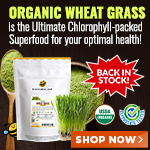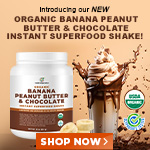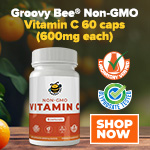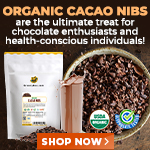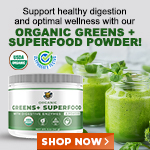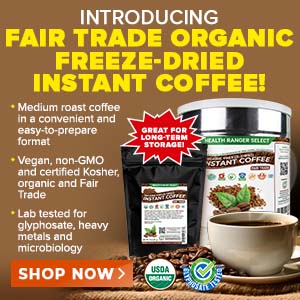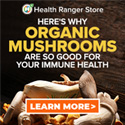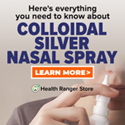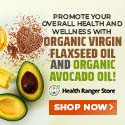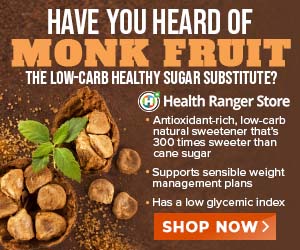
Business Opportunity: Demand for Purple Corn May Soon Explode
Wednesday, May 06, 2009 by: Barbara L. Minton
Tags: purple corn, health news, Natural News
- Newly released JFK files reveal Pentagon's role in creating Lyme disease and covid in the same lab
- DEADLY DECEPTION: How COVID vaccines increased mortality rates and why authorities hid the truth
- CDC finally halts $11 billion COVID funding scam as health officials admit the ‘pandemic’ was a fraud
- The hidden dangers in your kitchen: How cooking methods impact diabetes, cancer and aging
- GAIN-OF-FUNCTION CAT-BIRD-FLU now on the rise as nearly a dozen cats in Colorado "test positive" for Bird Flu due to contaminated cat food
- Trump's greatest betrayal so far: Accelerating Middle East wars, silencing dissent, and serving Zionist masters
- Here are TEN all-natural ways to protect your garden without using harmful chemicals
- Why you should think twice before buying mainstream toothpaste formulas
- ATTENTION PRESIDENT TRUMP: Please WITHDRAW your nomination of Dr. Susan Monarez for CDC Director as she is a VAX FANATIC and TOXIC JAB ZEALOT
- Was JFK's assassination orchestrated by a CIA double agent? New evidence points to James Angleton as the “architect”
- Home gardening for preppers: A beginner's guide to growing your own food
- Ginseng's hidden anti-aging power: How compound K is rewriting the rules of skincare
- “Endgame: The Hidden Agenda 21” unveils a world of conspiracy and control
- Record honeybee deaths devastate U.S. agriculture, pesticides under scrutiny
- Paper or plastic? The environmental deception behind bag bans
- Lab leak confirmed? Boris Johnson's stunning reversal on COVID origins sparks global debate
- Speaker Johnson warns Congress may defund or disband rogue courts targeting Trump
- Senate Democrats deny censorship industrial complex existed, defend government's role in silencing dissent
- Newly released JFK files reveal Pentagon's role in creating Lyme disease and covid in the same lab
- Elon Musk: Aliens could be here on Earth RIGHT NOW
- Festive flavors: The sweet history, nutritional profile and health benefits of pecan pie
- Trump reverses course on Gaza plan, says “nobody is expelling Palestinians”
- Reclaim your health: How midlife exercise reverses years of inactivity
- Big Pharma's $8 Billion bribery scheme exposed: how doctors are pushed to prescribe junk science, not heal
- Boys are back in town: Trump’s patriotic alpha crew takes the wheel while toxic females ride in the backseat
- EPA advisor admits the agency is funneling billions to climate groups ahead of Trump’s return to White House
- Space war brewing? Russia threatens to destroy Starlink satellites
- Survival 101: Effective EMF blocking techniques
- A lack of integrity in Academia: Harvard professor found GUILTY of fraudulent research to promote CRT theory
- Mike Adams Sermon 66: God will DESTROY ISRAEL for its wickedness
- 5 Simple steps to boost your brainpower: How to strengthen executive function in a distracted world
- Rep. Nancy Mace introduces bill to ban biological males from female facilities on federal property
- Sugarcane extract superior to cholesterol-lowering drugs?
- WHO focusing more on policing speech about public health and implementing global surveillance systems
- Pilots report mysterious lights 'moving at extreme speeds' across Oregon skies
- Dr. Mike Yeadon releases 15-minute testimony - WATCH - about genocidal intent of COVID “vaccines”
- EPA advisor admits the agency is funneling billions to climate groups ahead of Trump’s return to White House
- The Health Ranger releases “Vaccine Zombie” song and music video, using AI-animated zombies for the music video
- California's social media censorship law struck down: A victory for free speech or a threat to online safety?
- Dr. Mike Yeadon releases 15-minute testimony - WATCH - about genocidal intent of COVID “vaccines”
- The pandemic as a tool for INDOCTRINATION: Understanding “The Indoctrinated Brain” by Dr. Michael Nehls
- Florida takes a stand: DeSantis proposes permanent ban on mRNA vaccine mandates
- Mike Adams releases country western hit single: Goin’ Back in Time is Comin’ Home
- Mike Adams releases music poetry sensation: A Child of God
- “Why we influenced the 2020 elections”: Facebook files reveal the coordinated effort to bury the Hunter Biden laptop story
- RFK Jr. clears key hurdle: Sen. Susan Collins backs controversial HHS nominee, signaling a new era for health policy
- Unpacking the Lies That We’ve Been Fed – new song and music video released by Mike Adams, the Health Ranger
- Mike Adams releases new song and music video: Nothing More Disgusting Than a Globalist
- Newly released JFK files reveal Pentagon's role in creating Lyme disease and covid in the same lab
- Congratulations to the FULLY UNVACCINATED as you resisted the COVID-19 PROPAGANDA MACHINE fueled by over $100 BILLION
- Michigan sheriff announces criminal investigation into 2020 election crimes, Dominion Voting Systems
- Israeli soldiers accused of even more torture and abuse in the West Bank
- Migrants are taking advantage of recent hurricanes to scam residents and loot their homes
- House Intelligence Committee calls for the ARREST and PROSECUTION of Dr. Anthony Fauci
- Red Cross issues warning to stop blood plasma donations from vaccinated people
- Scientists confirm: GENIUS brain function can be spontaneously unleashed in humans without any apparent cause
- EPA advisor admits the agency is funneling billions to climate groups ahead of Trump’s return to White House
- HYSSOP: What research reveals about the health benefits of this ancient holy herb
- Two containers with completed ballots fall out of truck in Florida
- Fully vaccinated about to see “tsunami” of illness and death, warns virologist
- Global leaders unite to clamp down on “misinformation” with UN-backed Cascais Declaration
- BREAKING: 2025 NDAA authorizes mandatory military draft of WOMEN across America… as Pentagon pursues global NUCLEAR war with both Russia and China at the same time
- Michael Yon warns of a ZIONIST TAKEOVER in Trump’s second administration
- BOMBSHELL: DNA testing kits are a SCAM to develop ethnic-specific bioweapons
- Ozempic and Wegovy weight loss drugs are injectable LIZARD VENOM PEPTIDES that may unleash a devastating wave of organ failure… side effects align with symptoms of SNAKE BITES
- Israeli soldiers accused of even more torture and abuse in the West Bank
- These 13 countries just signed an agreement to engineer a global FAMINE by destroying food supply
- NASA admits that climate change occurs because of changes in Earth’s solar orbit, and NOT because of SUVs and fossil fuels
- RFK Jr. clears key hurdle: Sen. Susan Collins backs controversial HHS nominee, signaling a new era for health policy
- Sermon 30: How Jesus reveals Caesar’s FAKE CURRENCY and FALSE AUTHORITY
- Coriander seeds: Ancient medicine backed by modern science
- Arizona officials claim Maricopa County needs 10-13 days to tabulate results of the election
Why you might want to grow purple corn
The world is in a time of rapid change, moving away from dependence on chemicals and toward green living. This includes the movement toward green health care. People have had enough of the disease establishment and have learned there is nothing in it for them. This coming age will be one of personal empowerment in which more of us are willing to accept responsibility for ourselves including our health status. Demand for foods and products that can enhance and preserve health as well as help bring people back from disease has never been more brisk. As we turn our backs on the status seeking of mindless accumulation, we are becoming more mindful of the need to spend resources in a way that will benefit us as individuals.
Many areas of this newly emerging trend are already being mined. Almost weekly, new products show up on store shelves. Opportunity remains at the front end of this chain, where people produce the commodities that will be needed to support the increasing demand for products. Yet this is also a time of economic retrenchment, so what will work best will be those enterprises with low barriers to entry.
We are breaking from corporate ties and realizing we have to strike out on our own, and at the same time we are looking again to nature to guide us. It is a perfect convergence. What better way to stake a claim on life than to plant seeds in the ground and produce something of such great benefit?
Purple corn has what it takes to ward off aging and disease
Purple corn, also known as Zea mays, is a variety of sweet corn. By some quirk of fate, purple corn has one of the most deep, vibrant purple colorations in the plant kingdom. In the edible plant world, bright vivid color is a tip off that nature has created this plant to be enticing to people. Like the bright orange of carrots and the vibrant red of tomatoes, purple corn is purple to capture our interest.
The intense color in purple corn is the result of anthocyanins, water-soluble blue plant pigment. Anthocyanins are responsible for the spectrum of color in the plant world that ranges from purple to red. They belong to the larger class of phytochemicals known as flavonoids that are found in many food plants. This purple color has been prized by the people of the Peruvian Andes who use it as food and beverage coloring, a practice now becoming popular in other parts of the world. The Peruvians also make a fermented drink from purple corn kernels, called chica morada, which is said to lower blood pressure and reduce inflammation.
Purple corn is rich in antioxidants, compounds that neutralize the free radicals so responsible for the aging process. Its high phenolic content means it is well equipped to provide safety against degenerative diseases. Purple corn is a natural double play.
Purple corn out does blueberries
The mean anthocyanin content of whole, fresh purple corn from Peru was 16.4 mg/g, compared to the 1.3 to 3.8 mg/g range found in blueberries according to research from the Horticulture Department of Texas A&M University in Texas. The antioxidant capacity and anti-radical action were more than twice that measured in blueberries. (Journal of Agricultural and Food Chemistry, May, 2003)
This is an important finding for anyone contemplating growing purple corn. Blueberries sell at premium prices due to the high demand for their antioxidant benefits among the health conscious.
Cyanidin 3-glucoside (C3G) is the most abundant anthocyanin found in purple corn. Several studies have documented its power, including one that compared C3G to 13 other anthocyanins using oxygen radical absorption capacity (ORAC) as its measure. The ORAC rating of C3C was 3.5 times that of Trolox, a synthetic and potent antioxidant analogue of vitamin E.
Purple corn stops all growth and kills 20% of cancer cells in study
In a recent study, scientists from Ohio State University reported anthocyanins are potent antioxidants that may be protective against cancer. They compared the chemoprotective properties of anthocyanin extracts from purple corn, chokeberry, bilberry, purple carrot, grape, radish, and elderberry for their ability to inhibit colon cancer cell proliferation.
The researchers found that the amount of anthocyanin extract needed to reduce cancer cell growth by 50 percent varied among the plants tested. Extract derived from purple corn was the most potent, taking only 14 micrograms of C3G to reduce cancer cell growth by half. Extracts from chokeberry and bilberry were also fairly potent, though not as potent as the purple corn extract. Anthocyanins played a major role in the ability of the extracts to inhibit cancer, and they exerted an additive interaction with the other phenolics present.
In follow-up work, these researchers found that anthocyanin from red radish and black carrots slowed the growth of cancer cells anywhere from 50 to 80 percent. However, anthocyanins from purple corn and chokeberries not only completely stopped the growth of cancer cells, but also killed about 21 percent of cancer cells without having any effect on healthy cells. (Journal of Agricultural and Food Chemistry, October 22, 2008)
Purple corn color suppresses breast cancer resulting from gene damage
In another recent study completed in Japan where most of the research on purple corn is being done, scientists examined the influence of dietary purple corn color (PCC) extracted from purple corn seeds on induced mammary cancer in genetically damaged rats. They found that PCC significantly inhibited the cancer growth, and also significantly inhibited the growth of human mammary cancer implanted in the rats. PCC and C3G inhibited cell viability and induced appropriate cell death in the mammary tumor cells. The researchers concluded that C3G could act as a chemopreventive and also as a chemotherapeutic agent for cancers involving mutations in ras genes. Mutations in ras stimulate cell division and proliferation, and facilitate development of various cancers. (Cancer Science, September, 2008.
Purple corn color may be effective in preventing liver cancer
Other scientists in Japan found that the serum of rats treated with PCC provided evidence of significant antioxidant power. Micro array analyses showed PCC to induce RNA expression. They concluded that PCC may be effective as a chemopreventative agent against liver pre-neoplastic lesion development.
Hypertension and cholesterol are lowered by blue corn
Japanese scientists also investigated the effects of continuous administration of color from purple corn, purple sweet potato, and red radish to spontaneously hypertensive rats. The animals were fed with diets containing 1% of purple corn, purple sweet potato or radish color. They found that the body weight and daily food intake of administered rats were not different from those in the control group, and the blood pressure and heart rate of the hypertensive rats that were administered each color decreased compared to the control group. These results suggest that anthocyanins have strong anti-hypertensive effects. (Journal of Nutritional Science and Vitaminology, February, 2007)
Other Japanese researchers performed an oral toxicity study of PCC with groups of rats fed the agent at dietary levels of 0%, 0.5%, 1.5%, and 5% for 90 days. No mortalities occurred during the treatment period, and there were no treatment-related changes in body weight, ophthalmology, hematology, organ weight, or histopathology. An unexpected finding was that on clinical chemistry analysis, total cholesterol, phospholipids, and triglycerides were significantly lowered in both female and male rats. The no-observed-adverse-effects-level (NOAEL) for PCC was judged to be 5% in the diet for both sexes. (Food Chemistry and Toxicology, February, 2008)
Anthocyanins from purple corn are stable when heated
Researchers in China evaluated the thermal stability of purple corn. Total anthocyanin content and total phenolic content were identified, and individual anthocyanins were determined. Seven main compounds were identified. The thermal stability of the corn was studied by differential scanning calorimetry. Thermodynamic analysis was completed, and relationships between the degree of conversion and time or temperature were examined. The researchers concluded that the evaluated purple corn hybrids are a natural source of anthocyanins that remain stable over a wide range of temperatures and time. (Journal of Agriculture and Food Chemistry, November 26, 2008)
This finding means that blue corn can be used in many ways that people now use yellow corn. It can be cooked or baked without losing its potency. Popped blue corn might become a favorite.
The husks and cobs may be the best part
In a study from South Korea, the goal was to develop high-anthocyanin corn to enhance economic efficiency of anthocyanin production. The researchers determined and compared anthocyanin content from different parts of purple corn in various breeding lines. Results revealed that purple corn produced the anthocyanin pigment throughout the plant. It was found in especially high levels in the husk and cob regions. Anthocyanin levels of husks ranged from 17.3% to 18.9% of dry weight, roughly 10 times more than found in the kernel. (Journal of Agriculture and Food Chemistry, December 10, 2009)
This means that the parts of the traditional corn plant that were thrown away have value if they come from purple corn plants. The higher levels of anthocyanins in the husks and cobs make there parts ideal for supplement manufacturers.
For more information see:
http://purplecorn.wordpress.com/
http://www.futurepundit.com/archives/004498....
http://www.seriouseats.com/2008/11/grocery_n...
About the author
Barbara is a school psychologist, a published author in the area of personal finance, a breast cancer survivor using "alternative" treatments, a born existentialist, and a student of nature and all things natural.Purple corn at FETCH.news
Get independent news alerts on natural cures, food lab tests, cannabis medicine, science, robotics, drones, privacy and more.
Take Action: Support Natural News by linking to this article from your website
Permalink to this article:
Embed article link: (copy HTML code below):
Reprinting this article:
Non-commercial use OK, cite NaturalNews.com with clickable link.
Follow Natural News on Facebook, Twitter, Google Plus, and Pinterest
Science News & Studies
Medicine News and Information
Food News & Studies
Health News & Studies
Herbs News & Information
Pollution News & Studies
Cancer News & Studies
Climate News & Studies
Survival News & Information
Gear News & Information
News covering technology, stocks, hackers, and more



"Big Tech and mainstream media are constantly trying to silence the independent voices that dare to bring you the truth about toxic food ingredients, dangerous medications and the failed, fraudulent science of the profit-driven medical establishment.
Email is one of the best ways to make sure you stay informed, without the censorship of the tech giants (Google, Apple, Facebook, Twitter, YouTube, etc.). Stay informed and you'll even likely learn information that may help save your own life."
–The Health Ranger, Mike Adams












